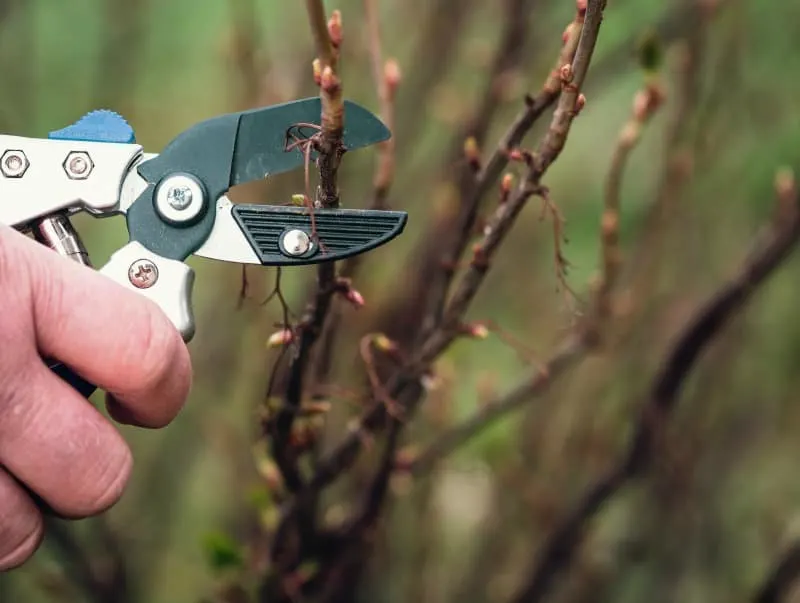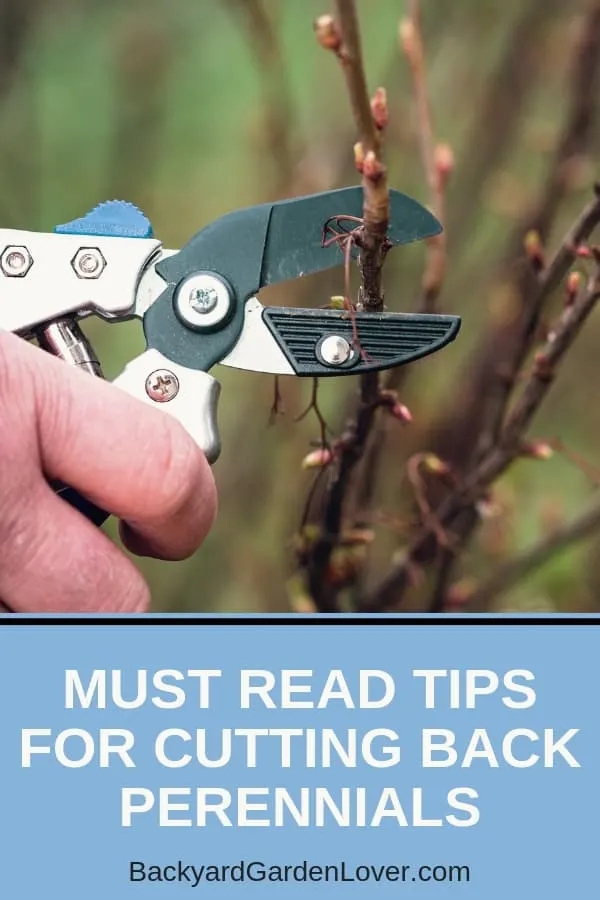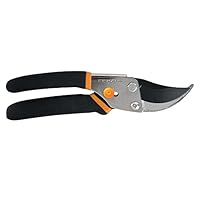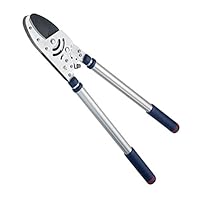Perennials are a gardener’s dream. There are many advantages to perennials, but the biggest advantage is their longevity. Year, after year, perennials grace our gardens with colors, shapes, and scents. These plants need very little maintenance. The one main maintenance job is cutting back perennials.

A Guide To Cutting Back Perennials
Here is a guide to cutting back your perennials, which includes various pruning techniques.
Tools you need to prune perennials
There are four garden tools you can use for pruning.
Note: While you have several choices for each tool, you don’t need them all. Try them out before you buy, so you can pick the one that is most comfortable for you to handle.
Hand pruners
There are two types:
- By-pass pruners are sharpened on one side. The sharpened side by-passes (or swings by) a curved but flat surface. The curved surface cradles the branch being pruned and slices it. This keeps the branch from being crushed.
- Anvil pruners have one blade that is sharp on both sides. The sharpened blade comes down on the other side of the pruner that is not sharpened: this crushes the branch.
Corona ClassicCUT Forged Bypass Hand Pruner, 1 Inch Diameter Cut,  Fiskars All Steel Bypass Pruning Shears
Fiskars All Steel Bypass Pruning Shears Felco F-6 Classic Pruner For Smaller Hands
Felco F-6 Classic Pruner For Smaller Hands mockins Professional Garden ANVIL Pruning Shears
mockins Professional Garden ANVIL Pruning Shears Power Drive Ratchet Anvil Hand Pruning Shears – 5x More Cutting Power Than Conventional Garden Tree Clippers.
Power Drive Ratchet Anvil Hand Pruning Shears – 5x More Cutting Power Than Conventional Garden Tree Clippers. Troy-Bilt Comfort Classic Anvil Pruner
Troy-Bilt Comfort Classic Anvil Pruner
Loppers
Loppers are long-handled pruners, and they also come in by-pass and anvil.
When a hand pruner is not strong enough to cut a branch, loppers give the gardener leverage when cutting. You can also use loppers for higher branches, but that is not their primary purpose.
Fiskars 28 Inch Bypass Lopper Spear & Jackson 8290RS Razorsharp Heavy Duty Telescopic Ratchet Anvil Loppers
Spear & Jackson 8290RS Razorsharp Heavy Duty Telescopic Ratchet Anvil Loppers 28 ~ 40 inch Extendable Anvil Razor-Edge Pruning Lopper – Up to 2 Inch Cutting Capacity
28 ~ 40 inch Extendable Anvil Razor-Edge Pruning Lopper – Up to 2 Inch Cutting Capacity 
Pruning shears
These shears are used for shaping shrubs or for cutting back a foliage plant for new growth.
Pruning saws
There are tree saws that are part of the pruning process but are really not worth the effort. A pole and rope saw in which the gardener has to balance it on the limb and then, after hours of getting it just right, cut the limb. The cutter has to run before the branch falls.
Once again, of the choices, tree saws, tri-cut blades, and folding saws, try each for comfort in use.
More Pruning Guides
- How to prune hibiscus
- How to prune roses
- How to prune mums
- How to prune hydrangeas
- How to prune tomatoes
Ways To Cut Back Perennials
1. Disbudding – is removing excess buds, which allows the remaining buds to flower. If you want your plants to produce larger flowers, this procedure works for pretty much any plant.
2. Pinching – makes for more blooms and a bushier plant. The best time to pinch your plants is in May or early to mid-June. You pinch the growing tip and first set of leaves just above the node.
Perennials that benefit from pinching:
- Yarrow
- Asters
- Chleone
- Eupatorium
- Helianthus
- Lobelia
- Monarda
- Penstemon
- Phlox
- Rudbeckia
- Solidago
3. Rejuvenation – is done when the plant becomes leggy and dull or if it’s diseased or pest-ridden. Rejuvenation is for older plants or plants that have diseases or pests. New plantings should never be rejuvenated.
Here are some of the perennials that will benefit from rejuvenation:
- Asters
- Bee Balm (Monarda)
- Spiderwort (Tradescantia)
- Agastache (Hyssop).
4. Cutting back – a little different from pinching, this delays blooms and makes plants bushier. Typically done in spring/summer. Cut back after the first blooming flowers begin to fade.
Perennials that benefit from cutting back:
- False Indigo (Baptisis)
- Tickseed (Coreopsis)
- Foxglove
- Queen of the Prairie
- Geum
- Heliopsis
- Heuchera
- Phlox
- Solidago
- Tradescantia
5. Thinning – produces healthier plants and stronger blooms.
Remove every one in three stems to ground level. Thinning is very helpful to reduce mildew in plants.
Perennials that need thinning:
- Asters
- Monarda
- Phlox
Don’t prune self-seeding plants unless you no longer want them:
- Columbine (Aquilegia)
- Sweet William (Phlox)
- Yarrow (Achillea)
- Bachelor’s Button (Centaurea)
- Jacob’s Ladder (Pologomium)
When should you trim perennials?
You may wonder when it’s the best time for cutting back perennials, and there isn’t a right answer that will fit all situations.
Some plants must be cut back in the fall to keep them healthy, while others can (or should) be left until spring. For a list of plants, you could trim in the fall and ones you should leave for spring, take a look here.











Landscaping With Petunias
Tuesday 25th of September 2018
[…] Related: how to prune perennials. […]